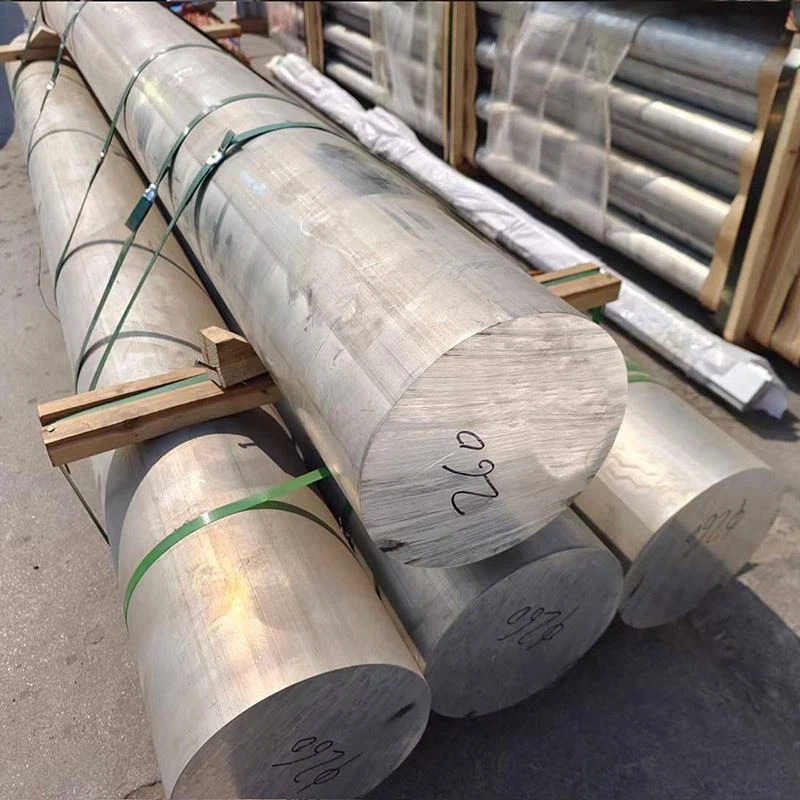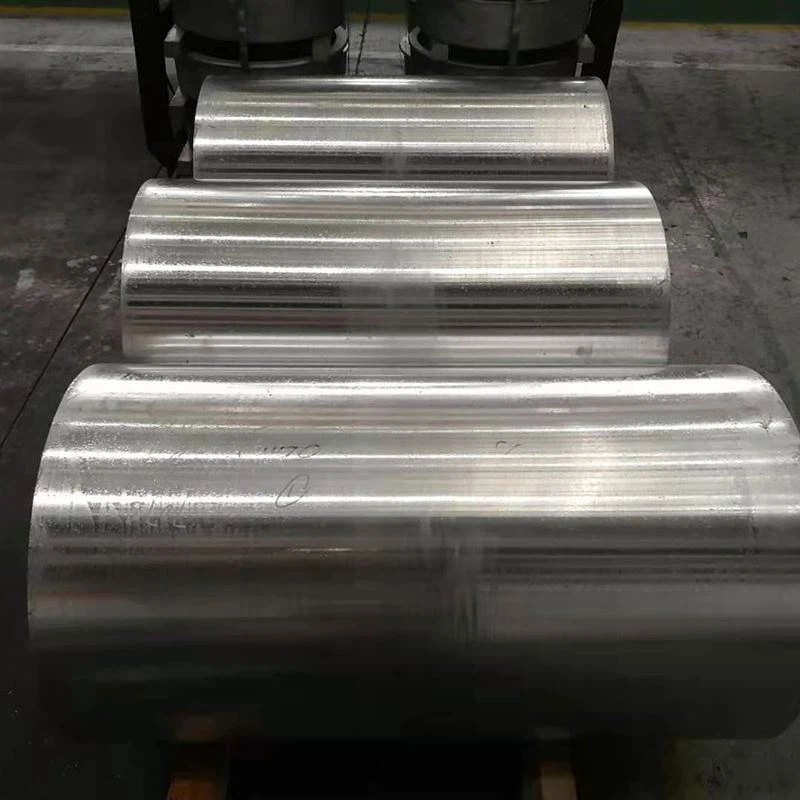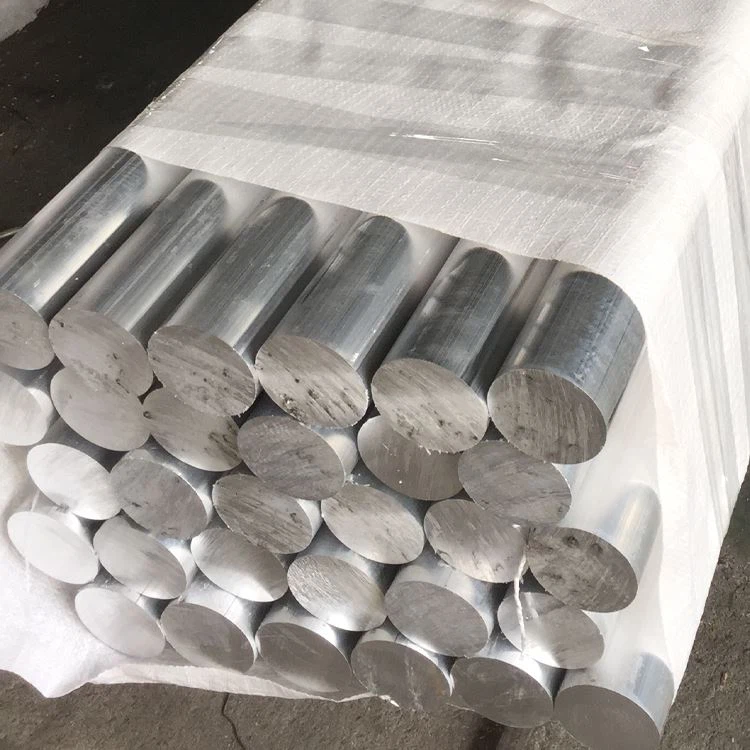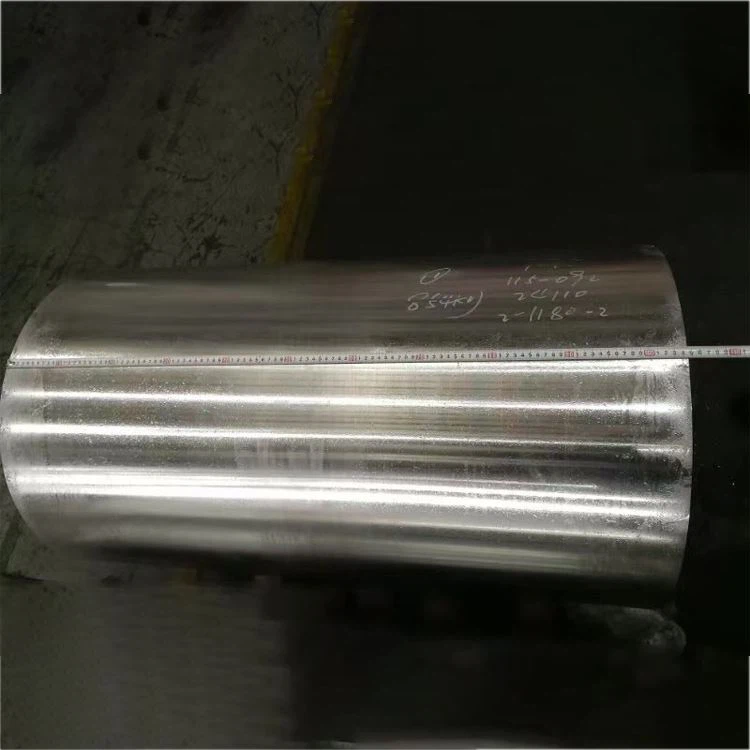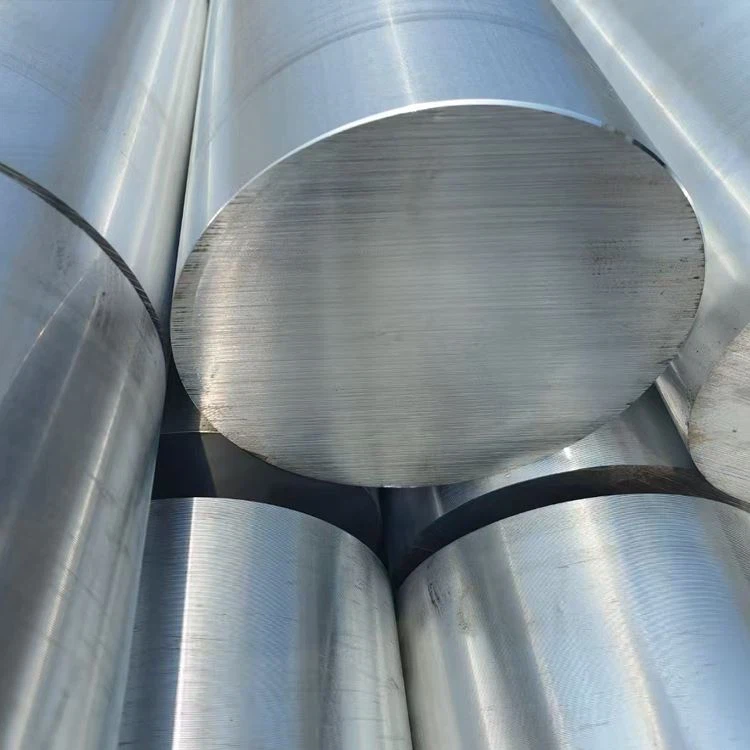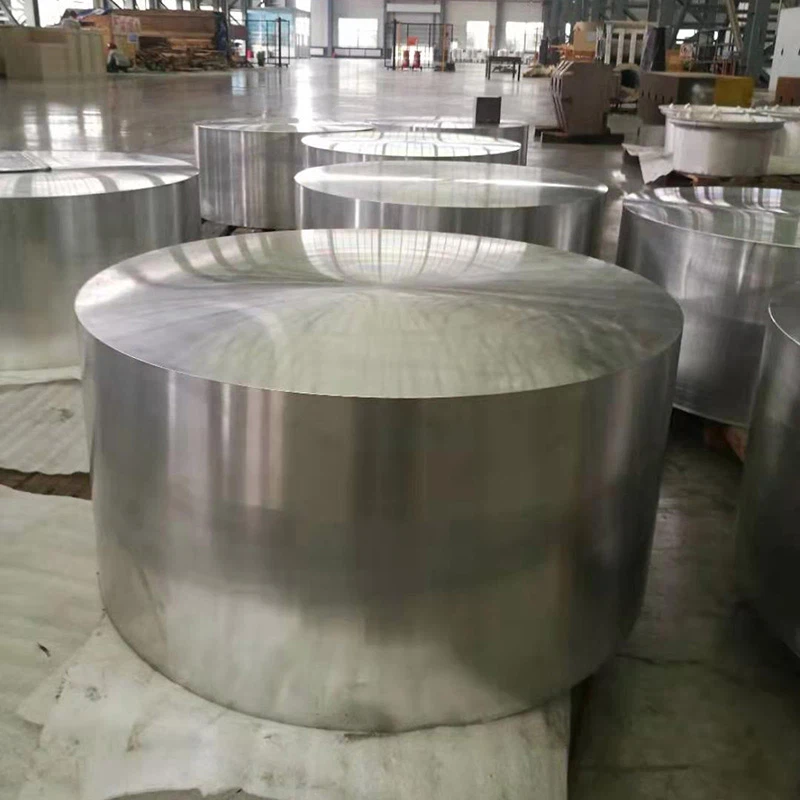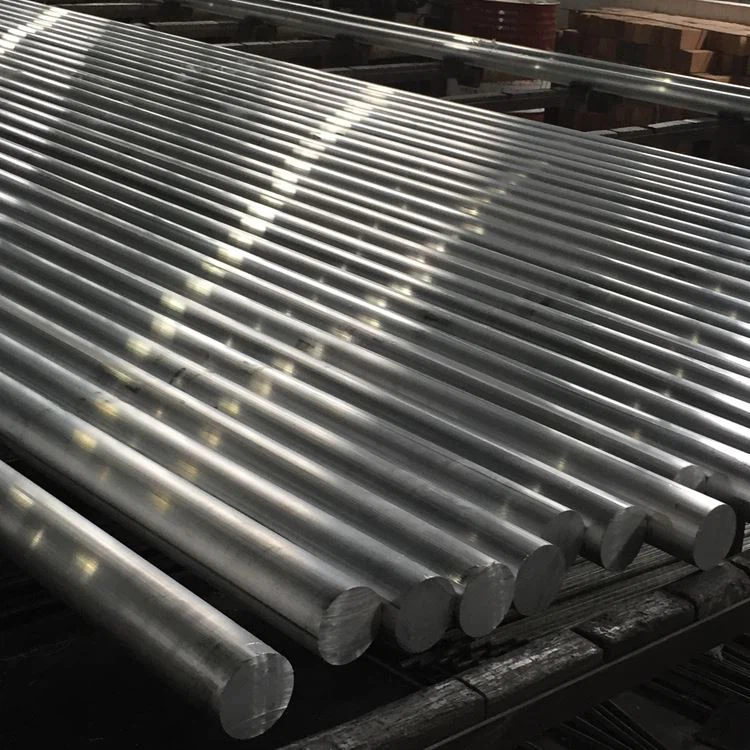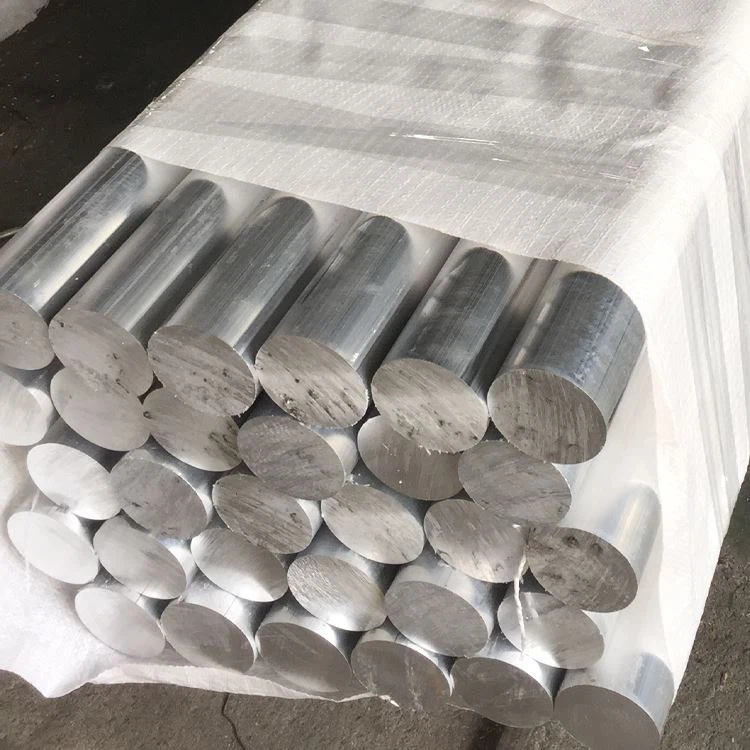1. Material Composition & Manufacturing Process
5052 aluminum round bar is a medium-strength non-heat-treatable aluminum-magnesium alloy that offers an exceptional balance of formability, weldability, and corrosion resistance, making it ideal for marine applications and general-purpose fabrication:
Primary Alloying Elements:
Magnesium (Mg): 2.2-2.8% (solid solution strengthening)
Chromium (Cr): 0.15-0.35% (corrosion resistance enhancement)
Base Material:
Aluminum (Al): ≥95.7% (balance)
Controlled Impurities:
Iron (Fe): ≤0.40% max
Silicon (Si): ≤0.25% max
Copper (Cu): ≤0.10% max
Manganese (Mn): ≤0.10% max
Zinc (Zn): ≤0.10% max
Other elements: ≤0.05% each, ≤0.15% total
Premium Manufacturing Process:
Melt Preparation:
High-purity primary aluminum (99.7% minimum)
Precise alloying element additions
Melt filtration through ceramic foam filters (20-30 ppi)
Advanced degassing treatment (hydrogen < 0.15 ml/100g)
Grain refinement with Al-Ti-B master alloy
Direct-chill (DC) semi-continuous casting
Homogenization:
450-480°C for 6-12 hours
Uniform temperature control: ±5°C
Controlled cooling rate: 30-50°C/hour
Hot Working:
Initial breakdown: 380-420°C
Intermediate rolling/forging: 350-380°C
Final hot working: 320-350°C
Careful temperature control to ensure uniform properties
Cold Working:
H32: Quarter-hard condition (strain hardened)
H34: Half-hard condition (strain hardened)
H38: Full-hard condition (strain hardened)
Annealing (for O temper):
340-360°C for 1-3 hours
Controlled cooling to achieve optimal grain structure
Finishing:
Surface conditioning
Precision straightening
Dimensional verification
Surface quality inspection
Full manufacturing traceability with comprehensive documentation for all production steps.
2. Mechanical Properties of 5052 Aluminum Round Bar
| Property | O (Annealed) | H32 | H34 | H38 | Test Method |
|---|---|---|---|---|---|
| Ultimate Tensile Strength | 170-215 MPa | 230-265 MPa | 255-290 MPa | 290-320 MPa | ASTM E8 |
| Yield Strength (0.2%) | 65-95 MPa | 160-190 MPa | 180-210 MPa | 220-250 MPa | ASTM E8 |
| Elongation (2 inch) | 18-30% | 12-18% | 8-14% | 5-10% | ASTM E8 |
| Hardness (Brinell) | 45-55 HB | 60-70 HB | 68-78 HB | 75-85 HB | ASTM E10 |
| Fatigue Strength (5×10⁸) | 90-110 MPa | 120-140 MPa | 130-150 MPa | 140-160 MPa | ASTM E466 |
| Shear Strength | 110-130 MPa | 140-160 MPa | 150-170 MPa | 165-185 MPa | ASTM B769 |
| Modulus of Elasticity | 70.3 GPa | 70.3 GPa | 70.3 GPa | 70.3 GPa | ASTM E111 |
Property Distribution:
Longitudinal to transverse property ratio: 1.00:0.95
Variation across diameter: <3% for bars up to 50mm, <5% for bars >50mm
Core to surface hardness variation: <5 HB
Property retention after welding: Excellent compared to heat-treatable alloys
3. Microstructural Characteristics
Key Microstructural Features:
Grain Structure:
Equiaxed grains in annealed condition
Elongated grains in strain-hardened tempers
ASTM grain size 5-8 (63-22μm)
Uniform grain distribution across section
Precipitate Distribution:
Al₁₂Mg₂Cr dispersoids: 50-200nm, uniform distribution
Al-Fe-Si intermetallics: Refined distribution
Cr-rich dispersoids: Enhances corrosion resistance
Texture Development:
Near-random orientation in O condition
Moderate deformation texture in H32/H34 tempers
Strong deformation texture in H38 temper
Special Features:
Fine Mg₂Si precipitates at grain boundaries (minimal)
Low dislocation density in O condition
Higher dislocation density in strain-hardened tempers
Excellent recrystallization control in intermediate tempers
4. Dimensional Specifications & Tolerances
| Parameter | Standard Range | Precision Tolerance | Commercial Tolerance | Test Method |
|---|---|---|---|---|
| Diameter | 6-200 mm | ±0.20mm up to 30mm | ±0.30mm up to 30mm | Micrometer |
| ±0.6% above 30mm | ±1.0% above 30mm | |||
| Ovality | N/A | 50% of diameter tolerance | 75% of diameter tolerance | Micrometer |
| Length | 2000-6000 mm | ±3mm | ±6mm | Tape measure |
| Straightness | N/A | 0.5mm/m | 1.0mm/m | Straightedge |
| Surface Roughness | N/A | 3.2 μm Ra max | 6.3 μm Ra max | Profilometer |
| Cut End Squareness | N/A | 0.5° max | 1.0° max | Protractor |
Standard Available Forms:
Round Bar: Diameters 6-200mm
Cut-to-length service available
Special tolerances available upon request
Precision ground bars for critical applications
Custom lengths and surface finishes available
5. Temper Designations & Work Hardening Options
| Temper Code | Process Description | Optimal Applications | Key Characteristics |
|---|---|---|---|
| O | Fully annealed, softened | Applications requiring maximum formability | Maximum ductility, lowest strength |
| H32 | Quarter-hard (strain hardened) | General purpose fabrication | Good balance of strength and formability |
| H34 | Half-hard (strain hardened) | Moderate strength applications | Higher strength with moderate ductility |
| H36 | Three-quarter hard | High-strength requirements | High strength with reduced formability |
| H38 | Full-hard (strain hardened) | Maximum strength applications | Highest strength with minimum formability |
Temper Selection Guidance:
O: Maximum forming, bending, or drawing operations
H32: General purpose fabrication with moderate forming
H34: Applications requiring higher strength with some formability
H36/H38: Applications requiring maximum strength with minimal forming
6. Machining & Fabrication Characteristics
| Operation | Tool Material | Recommended Parameters | Comments |
|---|---|---|---|
| Turning | HSS, Carbide | Vc=180-400 m/min, f=0.1-0.4 mm/rev | Good surface finish with proper tooling |
| Drilling | HSS, Carbide | Vc=60-120 m/min, f=0.15-0.35 mm/rev | Good hole quality, minimal burring |
| Milling | HSS, Carbide | Vc=180-500 m/min, fz=0.1-0.2 mm | Use climb milling for best finish |
| Tapping | HSS, TiN coated | Vc=15-30 m/min | Good thread quality with proper lubrication |
| Reaming | HSS, Carbide | Vc=40-90 m/min, f=0.2-0.5 mm/rev | H8 tolerance achievable |
| Sawing | HSS, Carbide-tipped | Vc=1000-2000 m/min | Fine tooth pitch for best results |
Fabrication Guidance:
Machinability Rating: 70% (1100 aluminum = 100%)
Surface Finish: Very Good (Ra 0.8-3.2μm readily achievable)
Chip Formation: Medium-length chips; chip breakers beneficial
Coolant: Water-soluble emulsion preferred (5-8% concentration)
Tool Wear: Low with proper parameters
Weldability: Excellent with TIG, MIG, and resistance welding
Cold Working: Excellent formability in O condition
Hot Working: 340-420°C recommended temperature range
Cold Bending: Minimum radius 1× diameter (O temper), 1.5× diameter (H32), 2× diameter (H34/H38)
7. Corrosion Resistance & Protection Systems
| Environment Type | Resistance Rating | Protection Method | Expected Performance |
|---|---|---|---|
| Industrial Atmosphere | Excellent | Clean surface | 15-20+ years |
| Marine Atmosphere | Very Good | Clean surface | 10-15+ years |
| Seawater Immersion | Good | Cathodic protection | 5-10+ years with maintenance |
| High Humidity | Excellent | Standard cleaning | 15-20+ years |
| Stress Corrosion | Excellent | Proper temper selection | Superior to 6xxx/7xxx series |
| Galvanic Corrosion | Good | Proper isolation | Careful design with dissimilar metals |
Surface Protection Options:
Anodizing:
Type II (Sulfuric): 10-25μm thickness
Type III (Hard): 25-50μm thickness
Color anodizing: Excellent color retention
Mechanical Finishing:
Polishing: Enhanced appearance and reduced corrosion initiation sites
Brushed finish: Decorative and functional
Bead blasting: Uniform matte appearance
Painting Systems:
Chromate conversion coating pretreatment
Epoxy primer + polyurethane topcoat
Marine-grade systems available
Chemical Conversion:
Alodine/Iridite chromate conversion
RoHS-compliant alternatives
7. Corrosion Resistance & Protection Systems
| Property | Value | Design Consideration |
|---|---|---|
| Density | 2.68 g/cm³ | Weight calculation for components |
| Melting Range | 607-649°C | Welding parameters |
| Thermal Conductivity | 138 W/m·K | Thermal management design |
| Electrical Conductivity | 35-37% IACS | Electrical applications design |
| Specific Heat | 880 J/kg·K | Thermal mass calculations |
| Thermal Expansion (CTE) | 23.8 ×10⁻⁶/K | Thermal stress analysis |
| Young’s Modulus | 70.3 GPa | Deflection and stiffness calculations |
| Poisson’s Ratio | 0.33 | Structural analysis parameter |
| Damping Capacity | Moderate | Vibration-sensitive applications |
Design Considerations:
Operating Temperature Range: -80°C to +200°C
Cryogenic Performance: Good (increased strength at low temperatures)
Magnetic Properties: Non-magnetic
Recyclability: 100% recyclable with high scrap value
Environmental Impact: Low carbon footprint compared to steel alternatives
9. Quality Assurance & Testing
Standard Testing Procedures:
Chemical Composition:
Optical emission spectroscopy
Verification of all major elements and impurities
Mechanical Testing:
Tensile testing (longitudinal)
Hardness testing (Brinell)
Dimensional Inspection:
Diameter measurements at multiple locations
Straightness verification
Ovality measurement
Visual Inspection:
Surface defects assessment
Finish quality verification
Specialized Testing (When Required):
Ultrasonic inspection per ASTM E114
Grain size determination (ASTM E112)
Corrosion testing (ASTM B117 salt spray)
Conductivity testing (eddy current)
Standard Certifications:
Mill Test Report (EN 10204 3.1)
Chemical analysis certification
Mechanical properties certification
Dimensional inspection report
Material traceability documentation
10. Applications & Design Considerations
Primary Applications:
Marine Components:
Small boat hardware
Fittings and fasteners
Railings and ladders
Non-structural marine components
Electrical & Electronics:
Electronic chassis and enclosures
Transformer components
Terminal blocks and connectors
Heat sinks for moderate thermal loads
Food & Beverage:
Food processing equipment
Commercial kitchen components
Beverage dispensing equipment
Storage tank components
Architectural:
Interior decorative elements
Signage components
Furniture components
Non-load bearing fixtures
General Fabrication:
Sheet metal components
Brackets and mounting hardware
Covers and panels
Machinery guards
Design Advantages:
Excellent corrosion resistance in most environments
Superior formability, especially in O temper
Excellent weldability without post-weld heat treatment
Good fatigue resistance
Attractive appearance with various finishes
Non-magnetic properties for electronic applications
Non-sparking properties for safety applications
Good machinability for complex components
Lightweight alternative to stainless steel
Moderate strength with excellent ductility
Design Limitations:
Lower strength compared to 6xxx and 7xxx series alloys
Not heat-treatable for strength enhancement
Moderate wear resistance
May experience stress relaxation under sustained loading
Not recommended for high-temperature applications above 200°C
Limited strength retention after welding in strain-hardened tempers
Economic Considerations:
Cost-effective alternative to stainless steel
Good balance of properties and cost
Lower maintenance costs in corrosive environments
Reduced finishing costs due to natural corrosion resistance
Excellent recyclability and high scrap value
Lower fabrication costs compared to harder materials
Sustainability Aspects:
100% recyclable with no loss of properties
Energy-efficient alternative to steel
Long service life reduces replacement frequency
No harmful substances or RoHS-restricted elements
Low environmental impact throughout lifecycle
High percentage of recycled content available
Material Selection Guidance:
Choose 5052 when corrosion resistance and formability are priorities
Select harder tempers (H34/H38) for increased strength requirements
Consider 6061-T6 when higher strength is required with moderate corrosion resistance
Consider 5083 for higher strength marine applications
Consider 3003 for less demanding applications with cost constraints
Processing Recommendations:
Allow for springback in forming operations (increases with harder tempers)
Use appropriate radius in bending operations based on temper
Employ proper cleaning procedures before welding

